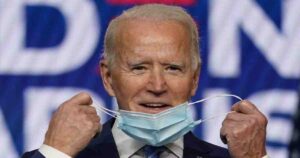By D Ravi Kanth (Geneva)
The “historic” and “transformative” trade agreement signed by the United States and China on 15 January 2020 could set a new normal in global trade relations by paving the way for a bilateral dispute resolution mechanism and managed trade between the world’s two largest economies – to the detriment of the multilateral trading system.Hours before signing the much-awaited “phase-one” trade deal, President Donald Trump maintained that the bilateral deal will not remove all the tariffs his administration had imposed on Chinese products until the “phase-two” agreement is reached.
President Trump has suggested that he has not removed the additional tariffs imposed on Chinese goods, arguing that he wants to retain “strong cards to play” during the second phase of negotiations, according to a report in the Washington Trade Daily on 16 January.
After 22 months of fractious negotiations and imposition of unilateral tariffs repeatedly by the US as well as China, the 90-page agreement seems to indicate that Washington secured more than Beijing in areas such as intellectual property and the resolution of bilateral disputes that could arise from non-implementation by either side.
While the bilateral trade agreement would bring détente, it has left in place the tariffs imposed by President Trump on about USD 370 billion worth of Chinese goods or roughly about three quarters of Chinese goods.
The second phase of negotiations, which are expected to deal with issues such as industrial subsidies and management of state-owned enterprises, among others, will test the resolve of the two sides as to how far they will proceed in removing the tit-for-tat tariffs imposed by each other over the past two years.
China has also not removed the tariffs it had imposed on American goods and it remains to be seen how Beijing will treat the USD 40 billion of purchase of American farm products, especially soybeans and pork, as agreed in the Phase-I agreement, an American trade official told reporters in a background briefing.
President Trump claimed that more than USD 200 billion worth of goods and services will be purchased by China over two years. He said the Chinese purchase of American farm products would amount to USD 50 billion while the agreement specified only USD 40 billion.
According to a report in the Wall Street Journal (WSJ), the proposed targets in the bilateral agreement “call for China to boost its purchasing above the levels seen in 2017, by about USD 78 billion in manufacturing, by an extra USD 32 billion of agriculture, by USD 52 billion of energy and by USD 38 billion of services”.
“The deal said targets have been agreed on for narrower categories of items, but these targets weren’t disclosed, the administration said, to avoid distorting markets,” the WSJ reported.
At the signing ceremony, President Trump said the remaining tariffs “will all come off” if the talks produce a second agreement.
He called the deal a “momentous step—one that has never been taken before with China—toward a future of fair and reciprocal trade.”
The Chinese Vice Premier Liu He, who signed the agreement on behalf of China, suggested the two sides need “to continue to be problem-oriented and focus on implementing the phase one trade agreement so as to bring about a good start in the sound economic and trade relations going forward.”
Nevertheless, the uncertainty over the trade relations between the world’s largest two economies would remain as most tariffs will continue to be maintained on Chinese imports. “While the deal contains wins for the U.S., the fact that most tariffs will remain on Chinese imports clouds prospects for growth in business investment between the two countries,” John Frisbie, a China expert at the trade consulting firm of Hills & Co, told the WSJ.
“Overall uncertainty is not reduced much because there is no removal of existing tariffs [and] questions whether China can buy the quantities of goods and services the Administration wants,” Frisbie maintained.
The US-China agreement could further improve the political prospects for President Trump in the coming elections later this year.
Despite the impeachment proceedings that are going to start in the U.S. Senate against Trump in late January, President Trump “saw an opportunity to advance the U.S. positioning at a time when the Chinese are seeing great political and economic turbulence,” said Jason Miller, a former Trump campaign spokesman, according to the report in the WSJ.
“The agreement is structured as one between equals, but Beijing is making nearly all the changes in policy and purchases and the pact focuses heavily on U.S. complaints that the Chinese government and companies coerce U.S. ones into handing over their technology to their rivals, and Mr. Trump’s focus on trying to close the vast trade deficit with China,” the WSJ reported.
While China claimed that it has never engaged in the practice of coercing foreign companies to share their technology, the agreement says “neither party shall require or pressure persons” to transfer technology to do business or to get regulatory approvals, according to the WSJ. China has also agreed to tighten the protection of trade secrets and to assess criminal penalties for “willful trade secret misappropriation.”
However, “much of the intellectual property language was light on specific rules in new areas” and “the pharmaceutical portion didn’t include specific targets and didn’t have language about defending biologic drugs from generic imitators, a major goal of big U.S. drugmakers,” the WSJ said in its report.
Significantly, the section on intellectual property provisions does not require China to change any law or regulation to fulfill its obligations. China has insisted on removing all the additional tariffs but Washington merely agreed to reduce tariffs on USD 120 billion of Chinese goods by half, from 15% to 7.5% in about 30 days.
In the financial services sector, China will need to open doors to American financial services providers, including Mastercard, Visa and American Express. In return the US is required to open its market to China’s UnionPay system.
On the enforcement front, the US-China agreement has suggested several rounds of consultations before taking any final measures. “If the two sides don’t reach an agreement, the complaining party could take “remedial measure in a proportionate way,” it has suggested.
With the U.S. likely to retaliate more than China in the event of non-implementation, the two sides will decide on imposing tariffs on the basis of good faith and proportionality.
White House Trade Advisor Peter Navarro said the U.S. tariffs on Chinese products were the catalyst for getting China to the bargaining table. “Keeping the tariffs in place will ensure that Beijing returns to that table for the second phase of negotiations and the phase-one deal allows the United States to impose more tariffs if Beijing violates the agreement,” he noted, according to a report in the Washington Trade Daily (WTD).
According to WTD, “some key Congressional Democrats criticized the phase-one deal for failing to address major unfair trade practices by China, like its use of government subsidies. ”
“Nixon went to China. Trump bent to China,” Senate Democratic Leader Chuck Schumer (NY) commented to reporters. Rather than waiting for a phase-two agreement, President Trump should “fix” phase one.
House Ways and Means Committee Chairman Richard Neal (D-Mass) said that by “calling it a ‘Phase One’ deal, the Administration admits that there are other important commitments they have not yet been able to secure, especially disciplines on China’s use of unfair subsidies.”
According to the Chinese publication Global Times (16 January), though a trade war is averted, uncertainty still remains. “It may be more difficult for China and the US to reach a comprehensive trade deal, but we hope the preliminary agreement will enlighten both sides’ further efforts”.
More importantly, the new Sino-US normal goes against the multilateral trading system that is based on rules and comparative advantage. The trade war between the two largest economies in the world has almost paved the way for managed trade in which countries compete not on the basis of their comparative trading strengths but on sheer market and power-based equations.
There will be a collateral damage in the global trade because of this new normal. Countries such as Australia, Brazil, Argentina, and other major farm producers could suffer once orders from China dry up because of the purchase of American farm products.
The US has not indicated it will remove all the technology-related sanctions for exports to Chinese companies, particularly Huawei, the world’s leading telecommunications company in the mobile internet services.
However, there is no guarantee that trade relations between the two major powers will dramatically improve due to this agreement. Indeed, the trade war could continue for a considerable period of time as it will decide on the “hegemon” to lead the fourth industrial revolution. “It is essentially a battle over who is going to be the hegemon and who is going to lead the fourth industrial revolution,” former South African trade minister Rob Davies told this writer.
– Third World Network




